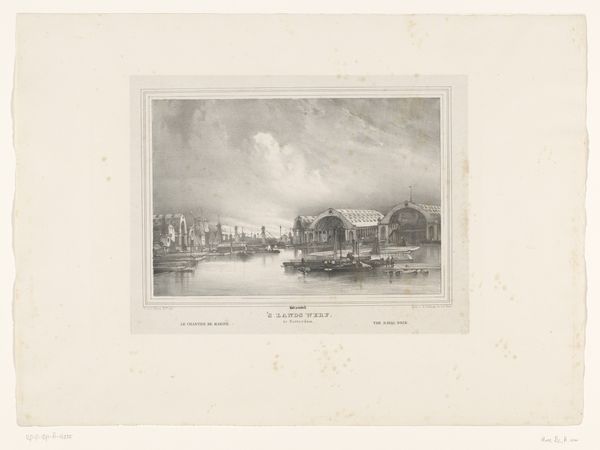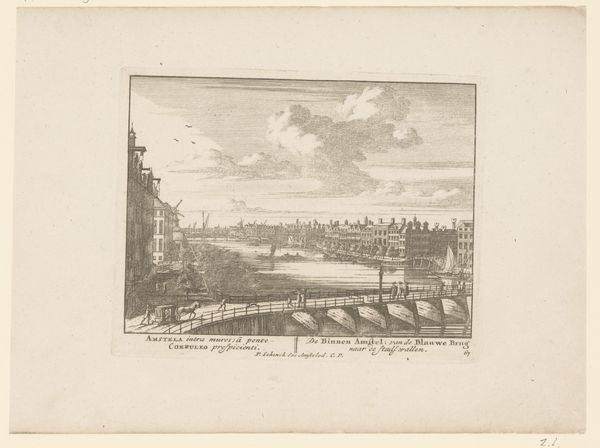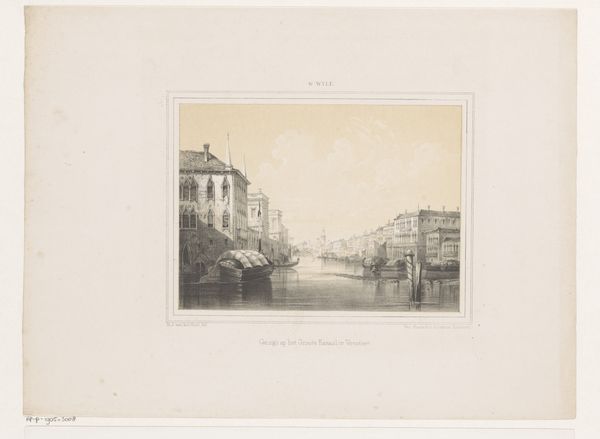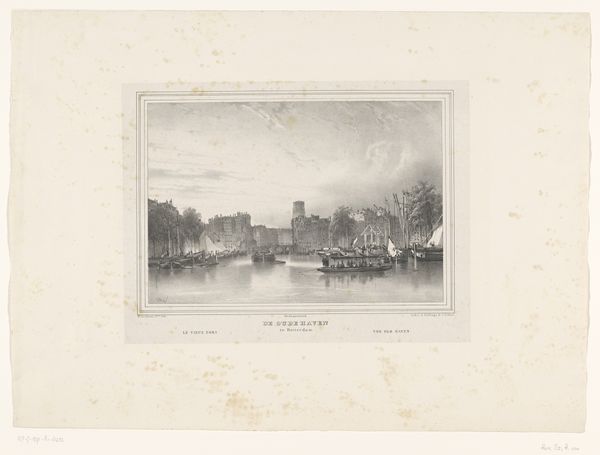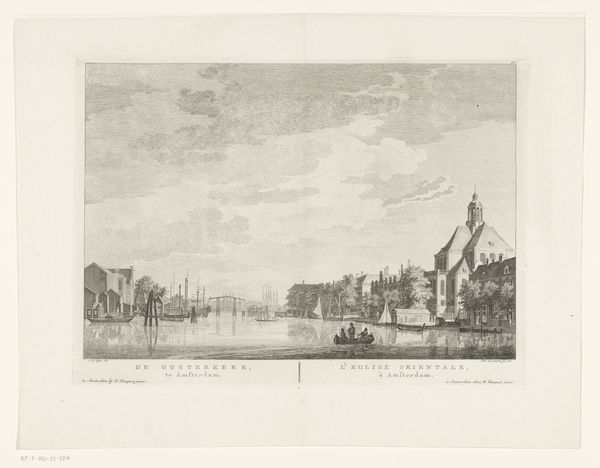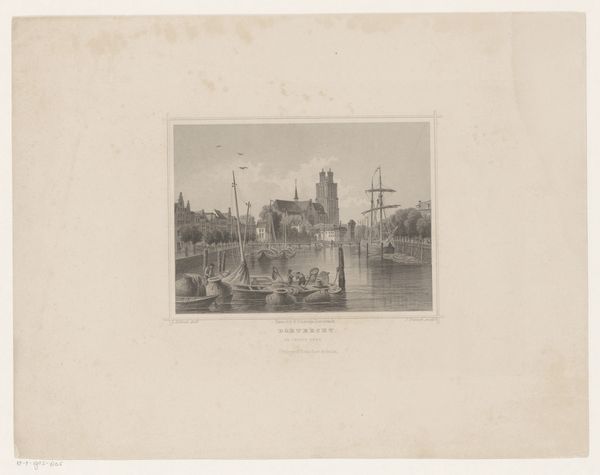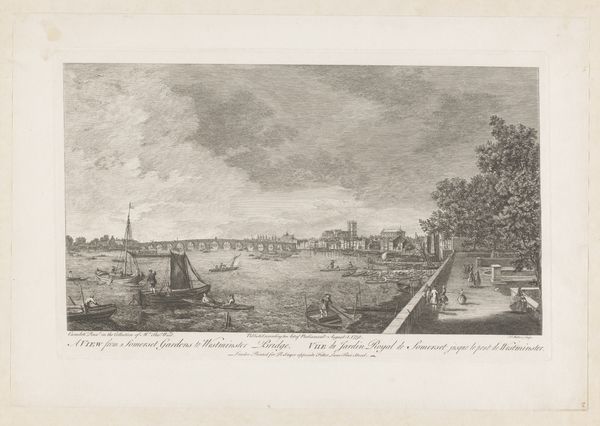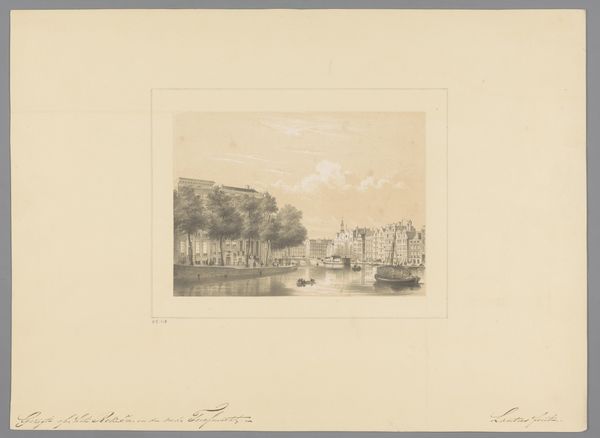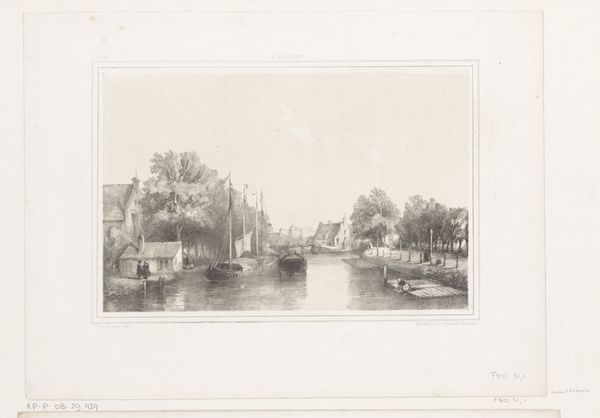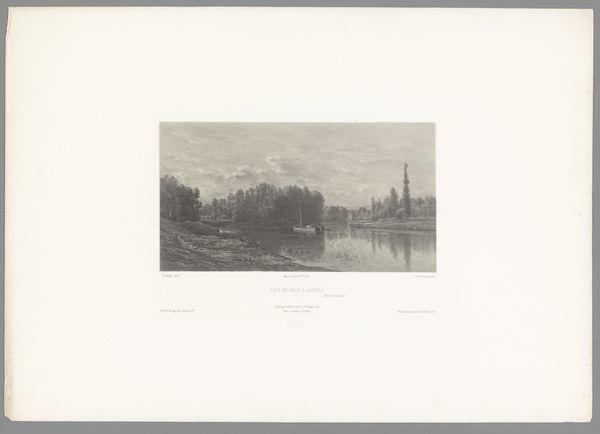
print, etching, engraving
aged paper
pale palette
pastel soft colours
etching
light coloured
landscape
white palette
romanticism
cityscape
engraving
Dimensions: height 312 mm, width 449 mm
Copyright: Rijks Museum: Open Domain
Curator: The artwork we're looking at is a print called "Zicht op de Seine vanaf de Pont Royal in Parijs," or "View of the Seine from the Pont Royal in Paris." It was created around 1838 by Louis-Julien Jacottet and is now held here at the Rijksmuseum. Editor: Immediately striking is the delicacy. It feels almost like a memory, faded and serene. The pale tones lend a wistful atmosphere. What I find fascinating, even in a piece depicting urban development, is the muted palette. Curator: The aged paper certainly contributes to that sense of history. But consider how the bridge, the Pont Royal, functions symbolically. Bridges often represent connection, transitions—perhaps even social change fermenting during this period of Parisian history? The July Revolution was only eight years prior. Editor: Absolutely. We have to read this piece through the lens of its socio-political moment. The industrial elements juxtaposed with the serene cityscape invites reflection. What kind of 'connection' are we really seeing here? It feels less like a bridge between people, and more between past traditions and looming modernisation, which might not be innocent at all. Curator: I think you make an important point about modernisation and its potential disruptions. There's something inherently nostalgic about the Romantic style that is exemplified here, an almost elegiac quality as if yearning for a perhaps simpler, bygone era, as change becomes unavoidable. Editor: Precisely, and those visual codes can tell us so much about anxieties around progress. The city, presented so gently, still conceals potential upheavals beneath its surface. By overlooking those shadows and that tension, aren’t we romanticizing and neutralizing forces that impact certain lives? Curator: I suppose, at its core, this piece underscores a continuous push and pull between our projected ideals, or yearnings, for continuity and connection against the undeniable forces of material change. And these visual artifacts provide, at the very least, insight to social anxieties that resonate still. Editor: It's in wrestling with these questions – seeing the art not just for its surface beauty but for its social implications – that it really comes alive. Thanks for untangling some of that with me.
Comments
No comments
Be the first to comment and join the conversation on the ultimate creative platform.
